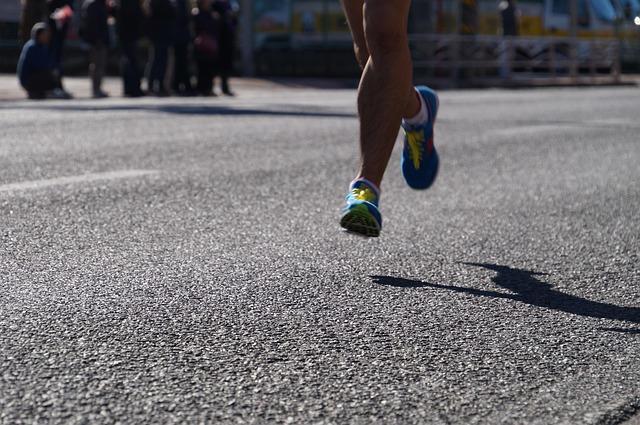The annual Two Oceans Marathon, renowned as one of South Africa’s premier ultra-distance races, has sparked fresh debate this year over its celebration of struggling athletes who crawl across the finish line. Critics and supporters alike are weighing in on whether highlighting these extreme displays of physical determination honours human perseverance or risks glorifying potential health dangers. As the conversation unfolds, questions arise about the balance between endurance sport’s spirit of pushing limits and the responsibility to safeguard participants’ well-being.
The Debate Over Celebrating Athlete Struggles at the Two Oceans Marathon
Supporters argue that celebrating those athletes who crawl or drag themselves to the finish line embodies the true spirit of the Two Oceans Marathon. These moments highlight determination, resilience, and the unyielding human will, qualities that elevate the race beyond a mere competition. By honoring these athletes, the event sends a powerful message that participation and perseverance count just as much as winning. For many, witnessing such displays of grit inspires community pride and personal motivation.
However, critics contend that glorifying suffering risks overshadowing the importance of safety and well-being. They caution that promoting the idea of “pushing through pain at all costs” might encourage dangerous behavior, particularly for less experienced runners facing extreme exhaustion or injury. Many suggest a balanced recognition approach, one that supports athletes’ mental and physical health while still applauding their courage. Points raised in the ongoing debate include:
- Safety protocols: Ensuring medical assistance is readily available.
- Mindset messages: Promoting smart pacing and injury prevention.
- Media portrayal: Avoiding sensationalizing extreme physical distress.
| Aspect | Pros of Celebration | Cons of Celebration |
|---|---|---|
| Inspiration | Shows human spirit and courage | May encourage risky behavior in others |
| Publicity | Generates emotional, compelling stories | Risk of negative image due to injury focus |
| Health | Highlights endurance achievements | Potential neglect of medical warnings |
Perspectives on Sportsmanship and the Message Sent by Highlighting Physical Struggles
Highlighting athletes who overcome extreme physical hardships to finish a race undeniably taps into the raw, emotional core of sportsmanship. It celebrates resilience, tenacity, and the sheer willpower that defines human endurance. However, this focus can also send mixed messages about the boundaries of safety and the glorification of pain. While some view the imagery of crawling competitors as inspiring proof of the human spirit, others worry it normalizes pushing beyond healthy limits, potentially encouraging athletes to risk their well-being for fleeting accolades.
Debate continues about the implications such portrayals have on public perception and athlete behavior. Critics argue that emphasizing physical struggle overshadows the importance of strategic preparation and physical health, inadvertently rewarding desperation over discipline. Supporters contend that these moments, captured vividly, embody the heart of competitive sport and motivate others to confront their personal challenges. The table below outlines key perspectives that shape this ongoing discourse:
| Perspective | Core Argument | Potential Impact |
|---|---|---|
| Inspirational | Showcases human determination | Encourages perseverance in adversity |
| Risk Normalization | Glorifies pushing physical limits | May promote unsafe competition practices |
| Health Advocacy | Emphasizes importance of preparation | Aims to protect athlete well-being |
| Media Influence | Shapes public admiration | Can skew values towards drama over safety |
Recommendations for Balancing Inspiration with Athlete Safety and Dignity
To ensure that the celebration of perseverance in events like the Two Oceans Marathon remains respectful and responsible, race organizers should prioritize the physical and mental well-being of athletes above all. This means implementing clear medical protocols that empower medical staff to intervene early when warning signs of exhaustion or injury emerge. Additionally, communication strategies should be refined to honor the spirit of determination without inadvertently encouraging athletes to push past dangerous limits. Recognizing effort and grit need not come at the expense of dignity or health, and a balanced approach can both inspire audiences and protect participants.
Key recommendations include:
- Enhanced medical screenings: Pre-race and on-course checks to flag at-risk athletes before conditions worsen.
- Clear finishing criteria: Establishing safe parameters for when crawling or limping may disqualify finish attempts to prevent long-term harm.
- Supportive messaging: Promoting stories of determination alongside education about recognizing body limits.
- Post-race care: Providing immediate and comprehensive recovery resources for struggling athletes.
| Aspect | Recommended Approach | Expected Outcome |
|---|---|---|
| Medical Oversight | Mandatory checkpoints every 5km | Early detection of risks |
| Finish Line Criteria | Strict guidelines on acceptable finish methods | Reduced injury rates |
| Communication | Balanced storytelling emphasizing health | Empowered, informed athletes |
| Post-Race Support | Dedicated medical tents and counseling | Improved recovery experiences |
In Retrospect
As the Two Oceans Marathon continues to grow in popularity, the debate over whether celebrating athletes who struggle-and even crawl-across the finish line is appropriate remains a contentious issue. Supporters argue that such moments embody the spirit of endurance and human determination, while critics question the message it sends about physical limits and safety. Ultimately, this discussion highlights the complex balance between perseverance and well-being in endurance sports, a conversation that the Two Oceans Marathon and its community will likely continue to navigate in the years ahead.

